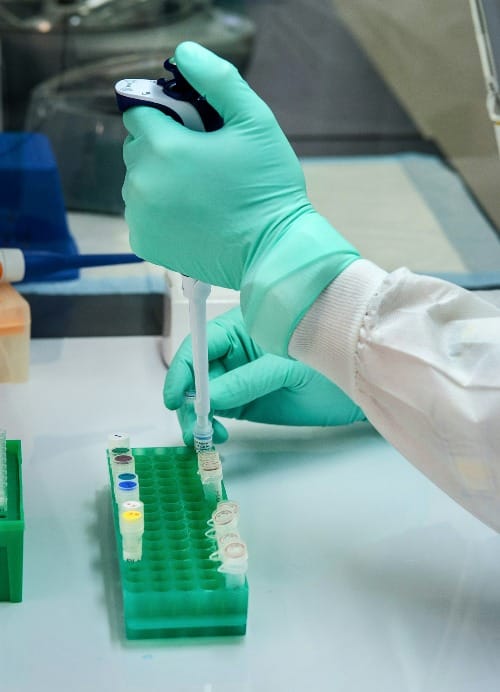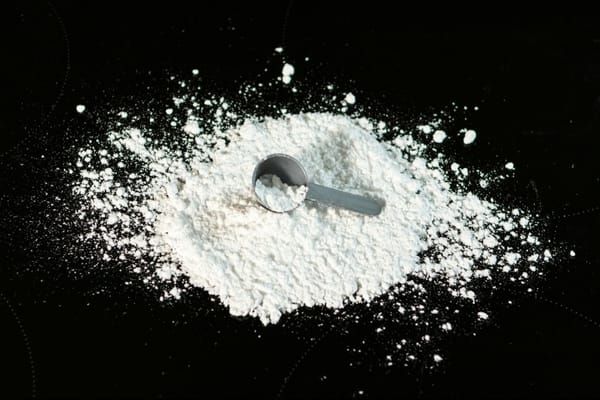Red laser light therapy, also known as low-level laser therapy (LLLT) or photobiomodulation, is a non-invasive treatment that uses low-wavelength red light to promote wound healing, reduce inflammation, and enhance tissue repair. Studies have shown that red laser light can stimulate cellular energy production, increase collagen synthesis, and improve blood circulation, making it a promising therapeutic option for various skin conditions and injuries.
Comparative Analysis of Red and Near-Infrared Wavelengths
Red and near-infrared (NIR) wavelengths are both utilized in low-level laser therapy (LLLT) for their therapeutic benefits, but they exhibit different levels of effectiveness depending on the application. Red light, typically in the range of 630-660 nm, is visible and penetrates the skin to a moderate depth, making it effective for treating surface-level conditions such as skin rejuvenation, wound healing, and reducing inflammation[2][4]. NIR light, ranging from 810-980 nm, penetrates deeper into tissues and is often used for more profound therapeutic effects, such as alleviating muscle and joint pain, enhancing tissue repair, and reducing inflammation in deeper tissues[1][2][4].
Studies have shown that specific wavelengths within these ranges can have varying degrees of effectiveness. For instance, a wavelength of 810 nm has been found to be particularly effective in promoting wound healing, as evidenced by significant wound area reduction, enhanced collagen accumulation, and complete re-epithelialization in a mouse model of dermal abrasion[1]. Conversely, wavelengths of 730 nm and 980 nm did not show significant healing effects in the same study, highlighting the importance of selecting the appropriate wavelength for specific therapeutic outcomes[1].
The biological mechanisms underlying these effects are linked to the absorption spectrum of cytochrome c oxidase, a key mitochondrial chromophore. This enzyme plays a crucial role in cellular respiration and energy production, and its absorption peaks align with the effective wavelengths of red and NIR light[1]. By stimulating cytochrome c oxidase, LLLT enhances mitochondrial function, leading to increased ATP production, reduced oxidative stress, and improved cellular repair processes[1][2][4].
In clinical settings, red light therapy is often used for dermatological applications, such as improving skin texture, reducing wrinkles, and treating acne and psoriasis[2][4]. NIR light therapy, on the other hand, is more commonly applied to musculoskeletal conditions, including tendonitis, arthritis, and muscle recovery, due to its deeper tissue penetration[2][4]. Both red and NIR light therapies have shown potential in reducing the side effects of cancer treatments, such as oral mucositis and radiation dermatitis, by promoting tissue repair and reducing inflammation[2][4].
Despite the promising results, it is essential to note that the effectiveness of red and NIR light therapies can vary based on factors such as the specific wavelength used, the duration and frequency of treatment, and individual patient characteristics. Therefore, more extensive clinical trials are needed to fully understand the optimal parameters for different therapeutic applications and to establish standardized treatment protocols[2][4][5].
Mechanisms of Mitochondrial Stimulation
Mitochondrial stimulation through red and near-infrared light therapy involves complex cellular mechanisms that enhance mitochondrial function and energy production. The primary target of this stimulation is cytochrome c oxidase, a key enzyme in the electron transport chain located in the inner mitochondrial membrane[2]. When exposed to specific wavelengths of light, typically in the range of 600-1000 nm, cytochrome c oxidase absorbs photons, leading to increased electron transport and ATP production[2][5].
This photobiomodulation process triggers a cascade of cellular events:
1. Increased ATP synthesis: The stimulation of cytochrome c oxidase accelerates the electron transport chain, resulting in enhanced ATP production[2][5].
2. Modulation of reactive oxygen species (ROS): Light therapy can lead to a transient increase in ROS, which acts as a signaling molecule to activate various cellular pathways[2].
3. Release of nitric oxide: Photobiomodulation can dissociate nitric oxide from cytochrome c oxidase, improving oxygen consumption and cellular respiration[2].
4. Calcium signaling: Mitochondrial stimulation influences calcium homeostasis, which is crucial for various cellular processes. The mitochondrial calcium uniporter (MCU) plays a significant role in calcium uptake, affecting energy production and cell signaling[2].
5. Activation of transcription factors: The cellular response to mitochondrial stimulation includes the activation of transcription factors such as NF-κB, which regulate gene expression related to cell survival, proliferation, and repair[5].
6. Upregulation of antioxidant mechanisms: Photobiomodulation can enhance the cell's antioxidant defenses, helping to maintain redox balance and protect against oxidative stress[5].
7. Mitochondrial biogenesis: Prolonged stimulation can lead to an increase in mitochondrial mass and number, improving overall cellular energy capacity[3].
The effects of mitochondrial stimulation extend beyond energy production. It can influence mitochondrial dynamics, including fission and fusion processes, which are critical for maintaining mitochondrial health and function[4]. These dynamics allow mitochondria to adapt to cellular energy demands and facilitate the removal of damaged mitochondria through mitophagy[4].
Furthermore, mitochondrial stimulation can impact cellular stress responses. For instance, it can modulate the opening of the mitochondrial permeability transition pore (mPTP), which plays a crucial role in cell death pathways[2]. By regulating mPTP opening, photobiomodulation can potentially protect cells from apoptosis under stress conditions.
It's important to note that the efficacy of mitochondrial stimulation depends on various factors, including the specific wavelength used, the duration and intensity of exposure, and the initial state of the cells or tissues being treated[5]. The concept of biphasic dose response in photobiomodulation suggests that there is an optimal range of stimulation, beyond which the beneficial effects may diminish or even become inhibitory[5].
In conclusion, the mechanisms of mitochondrial stimulation through light therapy involve a complex interplay of cellular processes, centered around enhanced mitochondrial function and energy production. These mechanisms contribute to the potential therapeutic applications of photobiomodulation in various medical fields, including dermatology, neurology, and regenerative medicine[1][2][5].
Clinical Applications in Dermatology
Photobiomodulation (PBM) has shown promising results in various dermatological applications, offering non-invasive treatment options for a range of skin conditions. Clinical studies have demonstrated the efficacy of PBM in several areas of dermatology:
1. Wound Healing: PBM has been found to accelerate wound healing processes. It stimulates cellular energy production, increases collagen synthesis, and improves blood circulation, which are crucial factors in tissue repair[1][2]. This makes PBM particularly useful in treating chronic wounds, surgical incisions, and burns.
2. Skin Rejuvenation: Low-level light therapy has shown potential in reducing signs of aging. It can improve skin texture, reduce fine lines and wrinkles, and enhance overall skin appearance. The mechanism involves stimulating collagen production and increasing cellular turnover[1][2].
3. Acne Treatment: PBM has demonstrated effectiveness in managing acne vulgaris. It works by reducing inflammation, modulating sebum production, and potentially targeting acne-causing bacteria. Both red and blue light therapies have shown promise in this area[1][2].
4. Psoriasis Management: Studies have indicated that PBM can help alleviate symptoms of psoriasis. It reduces inflammation and may help normalize the rapid cell turnover characteristic of this condition[1][2].
5. Hair Growth Stimulation: Low-level light therapy has been used to promote hair growth in cases of androgenetic alopecia. It stimulates dormant hair follicles and may increase the duration of the anagen (growth) phase of the hair cycle[1][2].
6. Scar Management: PBM has shown potential in improving the appearance of scars, including hypertrophic scars and keloids. It may help by modulating collagen production and reducing inflammation[1][2].
7. Vitiligo Treatment: Some studies have explored the use of PBM in combination with other therapies for vitiligo, showing potential in stimulating melanocyte proliferation and migration[1][2].
8. Reduction of Side Effects from Cancer Treatments: PBM has been investigated for its potential to reduce dermatological side effects of cancer treatments, such as radiation dermatitis and chemotherapy-induced alopecia[1][2].
It's important to note that while these applications show promise, the effectiveness of PBM can vary based on factors such as the specific wavelength used, treatment duration, and individual patient characteristics. Additionally, more extensive clinical trials are needed to fully establish the efficacy and optimal treatment protocols for many of these applications[1][2].
The growing body of evidence supporting PBM in dermatology has led to increased interest in integrating this therapy into clinical practice. However, dermatologists should consider PBM as part of a comprehensive treatment approach, often used in combination with other established therapies for optimal results[1][2].
Evidence and Effectiveness
The evidence for red light therapy (RLT) is growing, but remains mixed and limited in some areas. While many studies show promising results, larger and more rigorous clinical trials are still needed to fully establish its effectiveness for various conditions. Here's an overview of the current evidence:
Skin Health and Appearance:
Several studies have shown positive effects of RLT on skin health. It has been found to potentially reduce wrinkles, promote collagen production, and improve skin complexion[1][2]. A review of clinical trials found that RLT demonstrated significant improvement in androgenic alopecia compared to baseline or controls in 10 out of 11 studies[4].
Pain and Inflammation:
There is tentative evidence that RLT may be useful in short-term treatment of pain caused by rheumatoid arthritis and possibly chronic joint disorders[4]. A study published in the Journal of Clinical Rheumatology found that RLT helped reduce pain and inflammation in patients with rheumatoid arthritis[3].
Hair Growth:
Some studies have shown promising results for hair growth. A study published in the Journal of Cosmetic and Laser Therapy found that RLT increased hair density in men with androgenetic alopecia[3]. However, a 2012 review found little evidence to support the use of lasers to treat hair loss, while later reviews in 2014 and 2015 found tentative evidence of benefit[4].
Wound Healing:
Research suggests that RLT may accelerate wound healing by stimulating cellular energy production and increasing blood circulation[1][3].
Cancer Treatment Side Effects:
A 2015 systematic review and meta-analysis found moderate-strength evidence supporting LLLT in the management of breast cancer-related lymphedema, with reductions in volume and pain immediately after conclusion of treatments[4].
Despite these promising findings, it's important to note that many studies have small sample sizes or lack placebo controls. The full effectiveness of red light therapy for many conditions has yet to be determined[1]. Most experts agree that while results look promising, more quality studies with larger numbers of people are needed[1].
Additionally, the effectiveness of RLT can vary based on factors such as the specific wavelength used, treatment duration, and individual patient characteristics[2][5]. The concept of biphasic dose response in photobiomodulation suggests that there is an optimal range of stimulation, beyond which the beneficial effects may diminish or even become inhibitory[5].
In conclusion, while there is growing evidence supporting the use of red light therapy for various conditions, more extensive and rigorous clinical trials are needed to fully establish its efficacy and optimal treatment protocols for different applications[1][2][3][4][5].














Member discussion